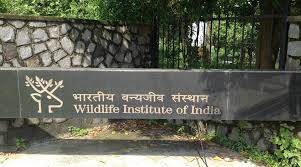Today’s Current Affairs: 15th November 2024 for UPSC IAS exams, State PSC exams, SSC CGL, State SSC, RRB, Railways, Banking Exam & IBPS, etc
Table of Contents
Wildlife Institute Of India : In News

Experts from the Wildlife Institute of India (WII) have claimed that the controversial ‘Project Cheetah’ in Kuno National Park, Madhya Pradesh, has proven to be a successful endeavour by the Centre.
- Wildlife Institute of India (WII) s an autonomous institution established in 1982 under the Ministry of Environment, Forests and Climate Change, Government of India, for nurturing the growth of wildlife science in the country.
- It is located in Dehradun, Uttarakhand.
- It shares the boundaries with the famous Rajaji National Park.
- It is an internationally acclaimed institution, which offers training programs, academic courses, and advisory in wildlife research and management.
- It is actively engaged in research across the breadth of the country on biodiversity-related issues.
- Objectives:
- Build up scientific knowledge of wildlife resources.\
- Train personnel at various levels for conservation and management of wildlife.
- Carry out research relevant to management including the development of techniques appropriate to Indian conditions.
- Provide information and advice on specific wildlife management problems.
- Collaborate with international organizations on wildlife research, management, and training.
- Develop as a regional centre of international importance on wildlife and natural resource conservation.
- The institute carries out research work in the fields of study, which include Biodiversity, policy related to wildlife, Endangered Species, Wildlife management, forensic Wildlife research work, Eco-development, Spatial Modelling, and studies related to changing climatic conditions.
- The board is chaired by the Union Minister and has representatives from the centre and state governments as well as institutions and academia.
Walking Pneumonia:

Doctors have reported cases of “walking pneumonia,” a mild yet persistent lung infection that can mimic symptoms of a common col.
- Walking Pneumonia is a type of atypical pneumonia most commonly caused by the bacteria Mycoplasma pneumoniae, but other bacteria or viruses can also cause it.
- It often presents symptoms similar to those of a common cold or mild respiratory infection, including cough, sore throat, low-grade fever, and fatigue.
- While it may not cause severe illness, it can still be disruptive, with symptoms lingering for weeks if left untreated.
- Unlike typical pneumonia, which can lead to severe lung inflammation and difficulty breathing, walking pneumonia is often less intense, allowing people to carry on with their daily activities, which is how it earned its name in the 1930s.
- It is also called ‘silent’ pneumonia because sometimes people don’t experience symptoms despite X-rays showing fluid-filled air sacs in the lungs.
- It is contagious. It’s spread through airborne droplets from close contact, such as coughing, sneezing, or speaking.
- It is often manageable with rest, fluids, and, in some cases, antibiotics.
Crinum andhricum : New Species Of Flowering Plant

Botanists recently discovered a new species of flowering plant ‘Crinum andhricum’ in the Eastern Ghats of Andhra Pradesh.
- Crinum andhricum is a new species of flowering plant.
- It was recorded from the Eastern Ghats of Andhra Pradesh.
- The species was named after Andhra Pradesh in recognition of the State where it was first found.
- It is part of the Amaryllidaceae family.
- It is the latest addition to India’s Crinum species, bringing the total to 16, with several being endemic to India.
- It has distinct features, including wider, oblanceolate perianth lobes (the outer part of the flower) and a greater number of flowers per cluster, producing between 12 and 38 flowers in each.
- The plant’s pedicelled flowers (with a stalk-like structure) make it unique among species in the region.
- The flowers of Crinum andhricum are waxy white, blooming between April and June.
- Standing on a tall stem that reaches up to 100 cm, the plant is well-suited to dry, rocky crevices in the Eastern Ghats.
- The leaves are large, elliptic, and have smooth, entire margins.
- Based on its current limited distribution and environmental threats, the researchers have given Crinum andhricum a preliminary status of ‘Data Deficient’ under the IUCN guidelines.
Exercise Sea Vigil:

The Indian Navy is set to conduct the fourth edition of the ‘Pan-India’ Coastal Defence Exercise ‘Sea Vigil-24’ on 20 & 21 Nov 24
- Exercise Sea Vigil is the National Level Coastal Defence Exercise conceptualized in 2018 to validate various measures that have been instituted towards enhancing maritime security since ‘26/11’.
- The concept of ‘Sea Vigil’ is to activate the Coastal Security apparatus across India and assess the overarching Coastal Defence mechanism.
- This fourth edition of Ex Sea Vigil involves 06 Ministries and 21 Organisations/ agencies.
- The exercise will focus on strengthening the security of coastal assets like ports, oil rigs, Single Point Moorings, Cable Landing Points and critical coastal infrastructure including the coastal population.
- This year participation by other Services (Indian Army and Air Force) and the planned deployment of a large number of ships and aircraft have enhanced the tempo of the exercise.
- This comprehensive exercise will engage complete coastal security infrastructure and all maritime stakeholders, including the fishing community and coastal populace, simultaneously.
- One of the aims of the exercise is to raise awareness amongst coastal communities about maritime security, and thus, the involvement of fishing communities, coastal populace, and students from NCC and Bharat Scouts and Guides will add to the fervour of the endeavour.
- Exercise Sea Vigil coordinated by the Indian Navy stands out as a national-level initiative that provides a holistic appraisal of India’s maritime defence and security capabilities.
- It is serving as a precursor to the Theatre Level Readiness Operational Exercise (TROPEX), conducted biennially by the Indian Navy.
Sukhna Lake:

The Union Ministry of Environment, Forest and Climate Change, has finally issued a notification demarcating an area from 1 km to 2.035 km around the Sukhna Wildlife Sanctuary as an Eco-Sensitive Zone (ESZ) on the Haryana side.
- Sukhna Lake is an artificial lake located in Chandigarh, India.
- It lies at the foothills (Shivalik hills) of the Himalayas.
- It was created in 1958 by damming the Sukhna Choe, a seasonal stream coming down from the Shivalik Hills.
- It is declared a National Wetland by the Government of India.
- The catchment area of the lake has rugged terrain and steep slopes, and the soils are predominantly alluvial sandy embedded with layers of clay and are highly susceptible to soil erosion by water run-off action.
- The water flowing into the lake is heavily loaded with silt.
- Sukhna Wildlife Sanctuary Spread over an area of about 26 square kilometers, the sanctuary is home to various species of birds, mammals, and reptiles.
- It is a sanctuary for many exotic migratory birds like the Siberian duck, Storks, and Cranes, during the winter months.
Cardiovascular Kidney Metabolic Syndrome:

An unhealthy lifestyle and the influence of globalisation are silently shaping a major global health issue called Cardiovascular Kidney Metabolic (CKM) syndrome.
- Cardiovascular Kidney Metabolic Syndrome is defined as a health disorder attributable to connections among obesity, diabetes, Chronic Kidney Disease (CKD) and Cardiovascular Disease (CVD), including heart failure, atrial fibrillation, coronary heart disease, stroke, and peripheral artery disease.
- Metabolic means getting energy from food. Obesity and Type 2 diabetes are metabolic conditions. Each of the four conditions in CKM syndrome can lead to or worsen one another.
- Extra adipose tissue(body fat) or body fat that’s abnormal causes CKM syndrome.
- This type of tissue releases substances that inflame and damage tissues in your heart, kidneys and arteries.
- Inflammation makes insulin less effective. It also encourages plaque and kidney damage to develop.
- Symptoms: Chest pain, Shortness of breath, Syncope (passing out), Swelling in your legs, feet, hands or ankles etc.
- Treatment: At an early stage, you may only need to make some lifestyle changes, like getting more physical activity.
- If you’re at a middle stage, you may need to take medicines to manage blood pressure, cholesterol and blood sugar.
Amorphophallus Titanum:

People in Geelong city have beelined to witness an unusual event – the blooming of the Amorphophallus Titanum (called Titan Arum in short).
- Amorphophallus Titanum (called Titan Arum in short) blooms once in a decade and is one of the largest in the world — growing over 10 ft in height.
- It is also called Corpse Flower.
- It was first described by Italian botanist Odoardo Beccari in 1878.
- It blooms approximately once every decade, with each flowering lasting merely 24 to 48 hours.
- It mimics the stench of rotting flesh to attract its pollinators — carnivorous bees and flies that feed on corpses.
- The dark, red interior of the spathe that is exposed when it is fully open looks like the surface of a piece of uncooked meat, and the spadix in the centre even warms up to provide the perfect simulation of a warm, abandoned body.
- It looks peculiar, with a tall, crooked, pale yellowish phallic structure — the ‘spadix’ — rising from the centre of what looks like an upturned meat skirt — its dark red, thick, waxy ‘spathe’, which is the spiral, petal-like structure that holds within it the inflorescence.
- It blossoms on limestone hills in the rainforests of western Sumatra, Indonesia, where it is called bunga bangkai (bunga means flower and bangkai means corpse).
- Conservation status IUCN: Endangered
Agricultural Policy Monitoring And Evaluation 2024 Report:

The Organisation for Economic Co-operation and Development (OECD) in its Agricultural Policy Monitoring and Evaluation 2024 report highlighted that India implicitly taxed its farmers USD 120 billion in 2023, the highest among 54 countries.
- This is a result of government policies like export bans and duties, which aim to keep food prices low for consumers but impose significant costs on the agricultural sector.
Key Highlights of the OECD’s Report:
- Total support for the agricultural sector across 54 countries averaged USD 842 billion per year from 2021 to 2023. Although it dropped in 2022 and 2023 compared to the 2021 peak, it still remained much higher than levels before the Covid-19 pandemic.
- Market Price Support (MPS) fell by USD 28 billion between 2021-23 but still remained a major part of total support.
- MPS is a policy measure that aims to keep the price of a specific agricultural product on the domestic market at a certain minimum (government set) level, which helps to raise domestic prices above world prices.
- In 2023, India’s export restrictions on rice, sugar, onions, and de-oiled rice bran led to a negative MPS, causing a USD 110 billion loss.
- As a result, farmers received less for their produce than they would have without these policies, leading to a significant reduction in their income.
- India’s overall market price support in 2023 was negative, amounting to a USD 110 billion loss, meaning farmers received less for their produce than they would have without these policies.
- India had the highest negative price support, followed by Vietnam and Argentina. India accounted for 62.5% of all global negative price support in 2023.
- This share has grown significantly from 61% in 2000-02 to 75% in 2021-23, highlighting the increasing burden on Indian farmers.
- Despite positive support through subsidies and Minimum Support Price(MSP) totaling USD 10 billion, the price-depressing policies overwhelmed these measures.
- Ongoing conflicts, such as Russia’s war against Ukraine and unrest in the Middle East, have disrupted agricultural markets, particularly affecting trade and global supply chains.
- The increasing frequency and severity of extreme weather events continue to challenge agricultural production and productivity.
- Some countries have implemented export restrictions, further distorting international trade in agricultural commodities
- Increasing farmer’s protests across nations underscore the economic and social struggles faced by farmers, reflecting deep-seated issues in agricultural systems.
- Global agricultural productivity growth has slowed, threatening the ability to meet growing global food demands while maintaining sustainability.
- Governments are linking payments to farming practices that support land health, biodiversity, and sustainability, but Environmental Public Goods Payments(EPGP) make up only 0.3% of total producer support.
- EPGP is a way to fund the provision of public goods that benefit the environment, such as climate protection.
National Technical Textiles Mission: In News
The Ministry of Textiles has approved 12 research projects under the National Technical Textiles Mission (NTTM) increasing the total number of approved research projects to 168.The research projects were approved across key strategic areas of geotextiles, sustainable and smart textiles etc.NTTM is an initiative of the Ministry of Textiles to promote the growth and development of the technical textiles sector in the country.
Anti-Dumping Duty on Epichlorohydrin Imports:
India recently imposed an Anti-Dumping(AD) duty of up to USD 557 per tonne on Epichlorohydrin imports from China, Korea, and Thailand to protect domestic industries from cheap imports.Epichlorohydrin, a colourless liquid with a strong garlic-like odour, is used in producing glycerol, elastomers, adhesives, and as a solvent for resins, paints, and lacquers.The Department of Revenue, acting on recommendations from the Directorate General of Trade Remedies (DGTR), imposed a five-year anti-dumping duty on Epichlorohydrin imports.AD duties are enforced as a protective measure under the multilateral regime of Geneva-based World Trade Organization (WTO) to ensure fair trade practices.
Titan Arum Flower:
The Titan Arum flower, one of the world’s largest flowers, bloomed in Australia. It grows over 10 feet tall and blooms once a decade.It has a tall, pale yellowish phallic structure rising from the centre. The base of the flower has a ‘corm’ which is an underground energy-storing structure that supports its 10 year bloom cycle and 6-month fruiting period. It mimics the stench of rotting flesh to attract its pollinators — carnivorous bees and flies that feed on corpses. Pollination by flies on rotten meat-smelling plants is called Sapromyophily.
Solar Fence Project:
In Odisha, frequent crop losses from elephants intruding into paddy fields prompted the Forest Department to launch the Solar Fence Project—a sustainable, humane solution aimed at protecting crops and fostering peaceful coexistence with wildlife.
Bulldozer Justice:
The Supreme Court in Demolition of Structures v. and Ors case judgement laid down a series of guidelines to ensure that due process is followed for demolishing the properties of citizens.“Bulldozer justice” refers to the practice of using bulldozers and heavy machinery to demolish properties of individuals accused of crimes, often without due legal process. The term symbolizes instant punitive action by the state, bypassing judicial adjudication and procedural safeguards.
Satyendra Nath Bose:
India celebrates the centenary of Bose-Einstein Statistics, a groundbreaking contribution by physicist Satyendra Nath Bose, which revolutionized quantum mechanics and paved the way for significant advancements in physics and technology. Satyendra Nath Bose Born: January 1, 1894, in Calcutta, India. Inspired by teachers like Jagadish Chandra Bose and Prafulla Chandra Roy.
Career: Began as a physics lecturer at Calcutta University (1916), later joined Dhaka University (1921). Known for his groundbreaking work in quantum mechanics and statistical physics.
Operation Kawach:
Delhi Police initiated Operation Kawach, a targeted crackdown against gangs, drug traffickers, and organized crime in response to rising criminal activities, including shootings in the city. Operation Kawach aim is to combat gang-related violence, drug trafficking, and illegal activities such as possession of firearms, liquor, and banned substances. Agency involved: Delhi Police, including local units, Special Cell, and Crime Branch.
Domestic Systemically Important Banks:
The Reserve Bank of India (RBI) on Wednesday retained the State Bank of India, HDFC Bank and ICICI Bank as Domestic Systemically Important Banks (D-SIBs). The RBI had first announced the framework dealing with D-SIBs in 2014.
Birsa Munda Jayanti 2024:
Birsa Munda Jayanti, also known as Janjatiya Gaurav Divas or Tribal Pride Day, is celebrated on November 15th every year. This day marks the birth anniversary of Birsa Munda, a brave tribal leader and freedom fighter. He is remembered for leading the Ulgulan movement against British rule and fighting for the rights of tribal people in India.
Know Your Medicine’ App Launched to Promote Clean Sports:
Union Minister for Youth Affairs & Sports, Dr. Mansukh Mandaviya, has launched a nationwide call to action to strengthen the fight against doping in sports, urging athletes, coaches, and the entire sporting community to adopt the National Anti-Doping Agency (NADA) India’s ‘Know Your Medicine (KYM)’ app.
Successful Flight Trials for DRDO’s Pinaka Weapon System:
The Defence Research and Development Organisation (DRDO) has successfully completed a series of flight tests for the Guided Pinaka Weapon System, conducted as part of the Provisional Staff Qualitative Requirements (PSQR) Validation Trials. This critical milestone involved three phases of testing across different field firing ranges, demonstrating the system’s operational effectiveness, precision, and advanced capabilities.
18th Pravasi Bharatiya Divas in Bhubaneswar:
The 18th Pravasi Bharatiya Divas (PBD) Convention will be held from January 8 to January 10, 2025, in Bhubaneswar, Odisha, in collaboration with the state government. The event will be inaugurated by Prime Minister Narendra Modi, as announced by the Ministry of External Affairs (MEA) on 12th November.




